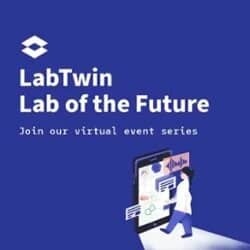User-centered design (UX) drives product development by focusing on the needs and expected behaviors of potential users. UX starts with understanding target users and leads to answers tailored to the needs of users. This necessitates working closely with users to design, develop, and refine products to meet their requirements. UX-driven life sciences innovation will drive the lab of the future.
Being the world’s first voice and AI-powered digital lab assistant, LabTwin focuses on UX and works closely with scientists at the point of experimentation. A recent roundtable organized by LabTwin at the Berlin Science Week discussed this topic with a panel of experts and early adopters. The discussion focused on UX for scientists, paving the way for the lab of the future. Moderated by Pablo from LabTwin, panelists for this discussion included Oded Kruchik, Neuroscientist, Lab and IT manager; Facundo Vera of Leonyte Biosciences; Miriam Estrada of Capgemini; Elena of Data Natives; and Magdalena Paluch, CEO of LabTwin.

Kruchik’s academic background gives him a unique perspective, and he hopes to see a lab of the future that is “seamless”. Coming from an agile life sciences startup, Vera believes that the UX should have vision, and lead to lab of the future comprising automation, robotics, and end-to-end analysis-based approach. Miriam Estrada from Capgemini sees UX driving an “agile and integrated” lab of the future. This approach is crucial to collaborative research, particularly in big pharma with multiple matrix teams. Elena hopes that UX can lead to development of products that prevent data from ending up in a data graveyard but can instead be utilized and leveraged. Finally, Magdalena Paluch provided valuable insight based on her work in UX, specifically at LabTwin. Paluch dreams of a lab of the future that is “user-centered and data driven”, and this approach accurately reflects LabTwin’s focus on intuitive technology accessible to scientists. She wants to leverage technology to solve today’s burning scientific problems in life sciences.
Summarizing the stimulating discussion from this panel, user-centered design and innovation can make research more time and cost effective, leading to increased efficiency and reproducibility.











